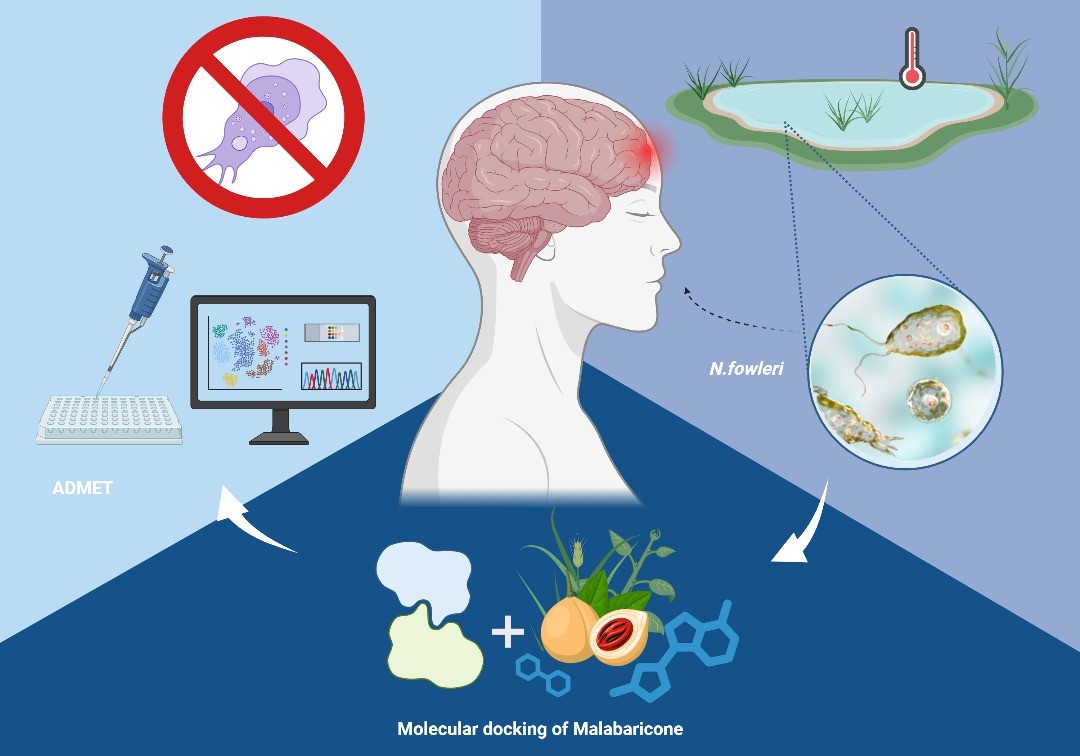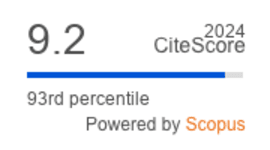Brain-Eating Amoeba Meets Plant Defense: In Vitro and In Silico Evaluation of Malabaricones as Potent Anti-Naegleria fowleri Agents
DOI:
https://doi.org/10.36877/pmmb.a0000469Abstract
Naegleria fowleri (N. fowleri) is a thermophilic, free-living amoeba that causes primary amoebic meningoencephalitis (PAM), a rapidly fatal brain infection with a mortality rate exceeding 97%. Current treatments are limited and often ineffective, creating an urgent need for new anti-amoebic agents. This study investigates, for the first time, the anti-amoebic potential of malabaricone A-C acylphenol compounds isolated from Myristica cinnamomea (cinnamon nutmeg) against N. fowleri, using both in vitro and in silico approaches. Parasite viability assays were conducted to evaluate the amoebicidal activity of each compound, while cytotoxicity tests on human cell lines assessed their selectivity. Molecular docking studies were performed to predict binding affinities to N. fowleri therapeutic targets, and ADMET profiling evaluated drug-likeness and toxicity. All three malabaricones significantly reduced trophozoite viability, with malabaricone B showing the greatest potency, followed by malabaricone C. Treated amoebae exhibited disrupted membranes, consistent with cell death. Importantly, all compounds displayed low cytotoxicity to mammalian cells at effective concentrations. In silico docking revealed strong binding affinities of the malabaricones, particularly malabaricone B, toward key amoebic proteins involved in metabolism and cell regulation. ADMET predictions indicated favourable pharmacokinetic and safety profiles. This study demonstrates that malabaricone A–C, especially malabaricone B, exhibit potent and selective anti-amoebic activity against N. fowleri, supported by both experimental and computational analyses. These findings position malabaricones as promising natural lead compounds for developing new PAM therapies, addressing a critical unmet need in anti-amoebic drug discovery. By identifying novel natural leads against a neglected yet deadly infection, this study advances Sustainable Development Goal 3 by promoting safer, more effective treatments and addressing health inequities in infectious disease care. Additionally, the integration of in silico methodologies aligns with Sustainable Development Goal 12 by fostering responsible consumption and production through the efficient use of natural resources and the reduction of experimental waste in drug discovery.
Graphical Abstract

Graphical abstract. Overview of in vitro and in silico studies demonstrating the anti-amoebic effects of malabaricone against N. fowleri.
Downloads
Additional Files
Published
How to Cite
Issue
Section
License
Copyright (c) 2025 Kavitha Rajendran, Niwasini Krishna Kumar, Lemmuel Tayo, Marineil Gomez, Devandran Apparasamy, Haema Thevanayagam, Shealtiel William Chan, Ryan Christian Mailem, Regine Menente, Catherine Joyce Rueda, Yasodha Sivasothy, Muhamad Aqmal Othman, Usman Ahmed, Niwasini Krishna Kumar, Chris Izaak Jones, Ayaz Anwar

This work is licensed under a Creative Commons Attribution-NonCommercial 4.0 International License.
Author(s) shall retain the copyright of their work and grant the Journal/Publisher right for the first publication with the work simultaneously licensed under:
Creative Commons Attribution-NonCommercial 4.0 International (CC BY-NC 4.0). This license allows for the copying, distribution and transmission of the work, provided the correct attribution of the original creator is stated. Adaptation and remixing are also permitted.

This broad license intends to facilitate free access to, as well as the unrestricted reuse of, original works of all types for non-commercial purposes.
The author(s) permits HH Publisher to publish this article that has not been submitted elsewhere.



.png)

.jpg)
